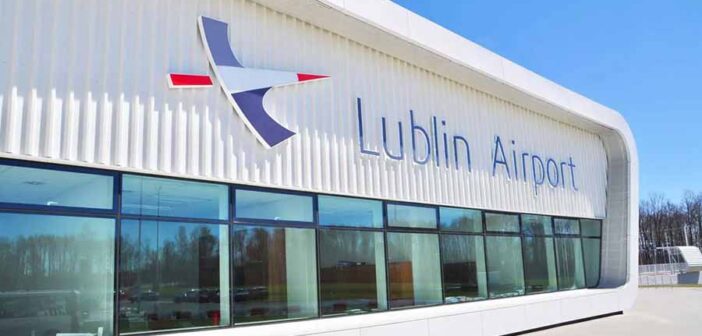Lublin Airport, located 10 kilometres east of Lublin in Świdnik, offers a straightforward and efficient experience for travellers. Serving around 400,000 passengers annually, this regional airport connects to destinations across Europe, including London Stansted, Oslo, and Dublin, primarily through low-cost carriers like Ryanair and Wizz Air. Its compact size and modern facilities make it a practical choice for those exploring eastern Poland or connecting to international routes.
Accessing the airport is convenient, with several transport options linking it to Lublin’s city centre. A shuttle bus, operated by MPK Lublin, runs between the airport and the city centre, covering the distance in about 25 minutes for 5.40 złoty, with tickets available via the Jakdojade app or onboard. The bus also connects to Lublin Główny railway station, facilitating train transfers to Warsaw or Kraków.
Taxis, available at the arrivals terminal, cost around 40 złoty to the city centre, with reliable operators like Green Cab accepting card payments. Drivers can reach the airport via the S17 expressway, with a 1,200-space car park offering free parking for the first 15 minutes and rates starting at 10 złoty per hour. Car rental agencies, including Avis and Hertz, are located in the arrivals hall, making onward travel straightforward.
The airport’s single terminal, opened in 2012, spans two levels and is designed for ease of navigation. The ground floor houses check-in desks, security, and arrivals, while the upper level features a departure lounge with five gates, split between Schengen and non-Schengen areas. The compact layout ensures short walking distances, with security typically taking under 10 minutes due to advanced scanners and low passenger volumes. During peak hours, such as early mornings or summer travel periods, check-in or security queues may extend slightly due to limited staffing or clustered flight schedules, as noted in Flightradar24 reviews. Travellers are advised to arrive two hours early for international flights and 1.5 hours for domestic ones to avoid delays.
Dining and retail options are limited but functional, catering to essential needs. Airside, a café serves coffee, sandwiches, and local Polish snacks like pierogi, while a small bar offers drinks and light meals. Landside, a newsagent provides snacks and travel essentials. A duty-free shop in the departure lounge stocks cosmetics, alcohol, and souvenirs, though the selection is modest compared to larger airports. Prices are higher than in Lublin city centre, so budget-conscious travellers may prefer to shop beforehand. The calm atmosphere reflects the airport’s low traffic, ensuring a relaxed experience.
Facilities are modern and traveller-focused, with free Wi-Fi available throughout the terminal for unlimited sessions via the “Lublin Airport” network. Charging stations are located near gates and in the café area, and a water fountain is available airside. Accessibility is well-supported, with ramps, lifts, and a dedicated assistance service for passengers with reduced mobility, bookable 48 hours in advance through the airport’s website. A parent room with baby-changing facilities caters to families, and a quiet area near Gate 3 provides a calm space for relaxation. The Executive Lounge, accessible for around €20, offers snacks, drinks, and Wi-Fi, though some passengers note the food selection is basic. A currency exchange and ATM are available, but seating can be limited during peak times, as reported on X.
On-time performance is generally strong, with the airport’s low flight volume—typically three to five daily flights—reducing congestion. Delays, when they occur, are often due to weather, particularly fog or snow in Poland’s winter months, or air traffic control issues, as mentioned in Flightradar24 data. Airline-specific problems, such as technical faults with low-cost carriers’ tight schedules, can also cause disruptions. Passengers are encouraged to check flight statuses via in-terminal screens or apps like Flightradar24.
Connections are limited, as Lublin Airport primarily serves point-to-point routes rather than acting as a transfer hub. The single-terminal layout simplifies gate changes, with minimal walking required. However, with few domestic flights and a focus on budget carriers, passengers needing onward connections may need to travel via larger hubs like Warsaw Chopin, 150 kilometres away, accessible by train or FlixBus in about two hours. Those with tight layovers should plan ample time, as low-cost airlines may not assist with missed connections.
Potential delays are typically linked to weather, staffing shortages, or baggage handling issues during peak seasons. The airport’s reliance on a single shuttle bus per flight can also cause delays for ground transport if flights arrive simultaneously, as noted on X. Travellers should monitor flight updates and pre-book taxis or car rentals to ensure smooth transfers.




